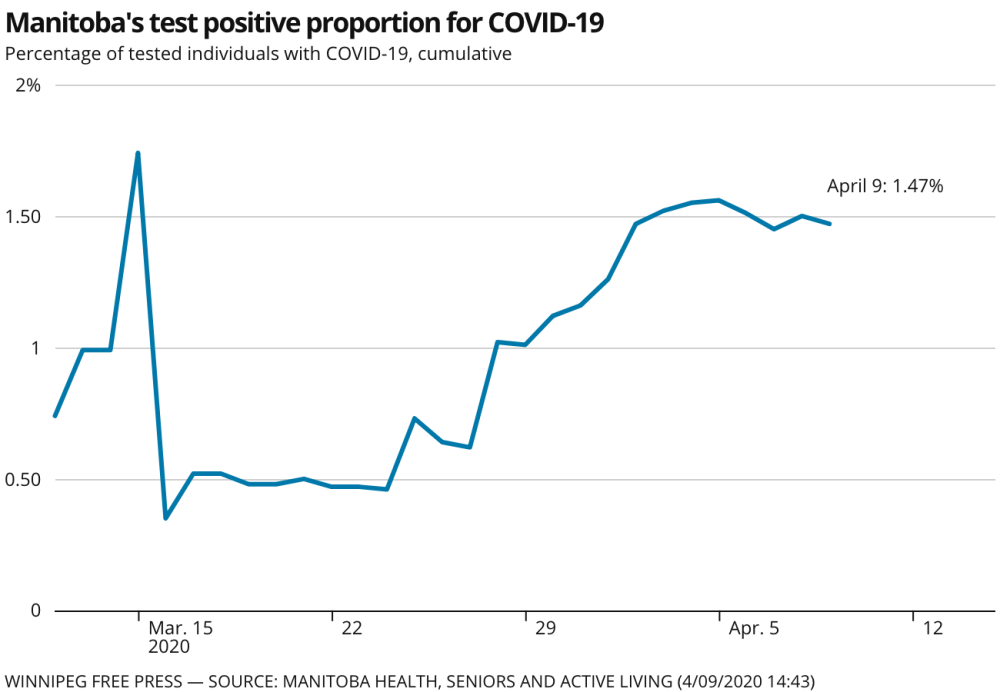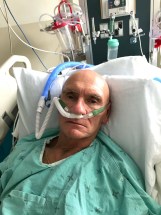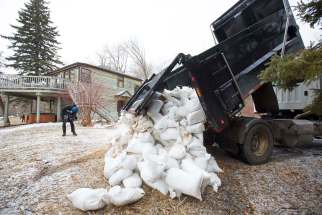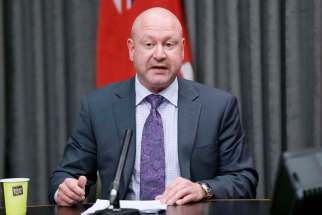We can’t let up now A glimmer of hope, but it's too early to relax social-distancing measures
Read this article for free:
or
Already have an account? Log in here »
To continue reading, please subscribe:
Monthly Digital Subscription
$0 for the first 4 weeks*
- Enjoy unlimited reading on winnipegfreepress.com
- Read the E-Edition, our digital replica newspaper
- Access News Break, our award-winning app
- Play interactive puzzles
*No charge for 4 weeks then price increases to the regular rate of $19.00 plus GST every four weeks. Offer available to new and qualified returning subscribers only. Cancel any time.
Monthly Digital Subscription
$4.75/week*
- Enjoy unlimited reading on winnipegfreepress.com
- Read the E-Edition, our digital replica newspaper
- Access News Break, our award-winning app
- Play interactive puzzles
*Billed as $19 plus GST every four weeks. Cancel any time.
To continue reading, please subscribe:
Add Free Press access to your Brandon Sun subscription for only an additional
$1 for the first 4 weeks*
*Your next subscription payment will increase by $1.00 and you will be charged $16.99 plus GST for four weeks. After four weeks, your payment will increase to $23.99 plus GST every four weeks.
Read unlimited articles for free today:
or
Already have an account? Log in here »
Hey there, time traveller!
This article was published 09/04/2020 (2035 days ago), so information in it may no longer be current.
If you’re looking for a sliver of hope around the COVID-19 pandemic in Manitoba, take some small comfort in knowing the infection rate among those tested for the virus has been falling in recent days.
It’s not much to celebrate, but it is tangible evidence that the measures government and the public are taking to reduce the spread of the virus that causes COVID-19 is working.
When Manitoba recorded its first positive COVID-19 case about a month ago, the percentage of those tested who had the disease (which the province calls the “test positive proportion”) was well below one per cent. But as more travellers returned home from abroad, including those showing symptoms, that proportion increased. By early April it climbed to well over one per cent, peaking at 1.56 per cent on April 5. Since then, that number has declined slightly. It fell to 1.47 per cent on Thursday.
At its peak, between two per cent and three per cent of people were testing positive on some days. But of the 2,261 people tested over the past five days (as of Thursday), less than one per cent were positive.
It makes sense. The number of travellers being tested has declined. Travellers showing symptoms are the highest-risk carriers, which is why the province has been testing them first. But as testing has been expanded to others, including symptomatic front-line health-care staff and first responders, the percentage of infected persons has declined.
That means collectively, through rigorous and painful physical-distancing measures (as well as exhaustive contact tracing of those infected), Manitobans are doing an effective job of slowing the spread of the virus. That’s confirmed by the relatively small number of people requiring hospitalization. If the virus were spreading rapidly through community transmission, our hospitals would be overwhelmed with very sick COVID-19 patients. They aren’t. There have been about 12 such patients in hospital, around half in intensive care and some on ventilators, on any given day over the past week. That number has held steady.
With three deaths as of Thursday, Manitoba’s case fatality rate (deaths as a percentage of positive tests) is 1.3 per cent, which is lower than in many other jurisdictions. It’s a small sample size. But it’s an encouraging sign.
There are risks associated with Manitoba’s early success in containing the virus. Dr. Brent Roussin, the province’s chief public health officer, says in no way do these numbers mean the risk of spreading the virus has declined. While Roussin said he’s encouraged by the test results, he’s concerned the public may interpret them to mean they can relax their physical-distancing measures.
They can’t. If they do, all the work Manitobans have done over the past few weeks, all the sacrifices people have made – especially front-line health-care workers – would be for naught. These numbers could change on a dime. It would take just one or two major outbreaks in a personal care home or a seniors residence to send infection numbers soaring. One church service or large park gathering could send dozens of people to hospital. This is a very infectious disease. It can spread like wildfire if you let it.
While Roussin said he’s encouraged by the test results, he’s concerned the public may interpret them to mean they can relax their physical-distancing measures.
Still, Manitobans deserve to know their efforts are paying off. The measures we’re taking are working. We’re preventing hospitals from being overwhelmed with COVID-19 patients. Which means we’re saving lives and helping protect front-line health workers. That’s the only thing that matters right now. Governments have no idea how long this will last or how many deaths we’ll see. Politicians have been pressured to release models that supposedly project infection rates, deaths and peak periods of transmission. But as Premier Brian Pallister has said repeatedly, those numbers are guesswork. They’re useless for planning purposes, largely because the assumptions they’re based on are unreliable.
The only thing we know for sure is that through physical distancing and targeted testing, we’re able to contain the virus. As Roussin has said repeatedly, we are not helpless against this disease. There are steps we can take to protect ourselves and others.
So far, we’re doing a good job of that. It’s now time to double down on those efforts.

Tom Brodbeck is an award-winning author and columnist with over 30 years experience in print media. He joined the Free Press in 2019. Born and raised in Montreal, Tom graduated from the University of Manitoba in 1993 with a Bachelor of Arts degree in economics and commerce. Read more about Tom.
Tom provides commentary and analysis on political and related issues at the municipal, provincial and federal level. His columns are built on research and coverage of local events. The Free Press’s editing team reviews Tom’s columns before they are posted online or published in print – part of the Free Press’s tradition, since 1872, of producing reliable independent journalism. Read more about Free Press’s history and mandate, and learn how our newsroom operates.
Our newsroom depends on a growing audience of readers to power our journalism. If you are not a paid reader, please consider becoming a subscriber.
Our newsroom depends on its audience of readers to power our journalism. Thank you for your support.








